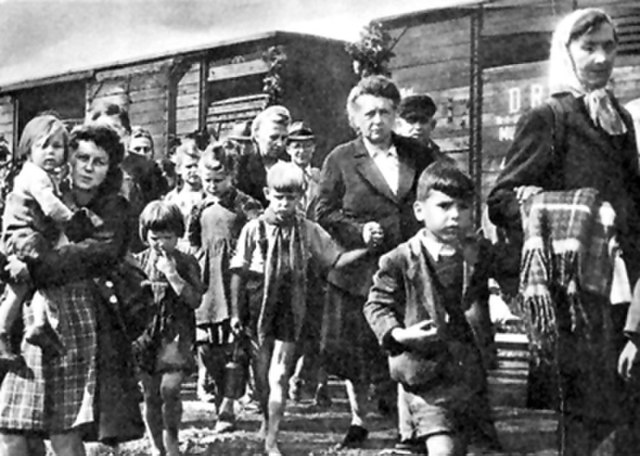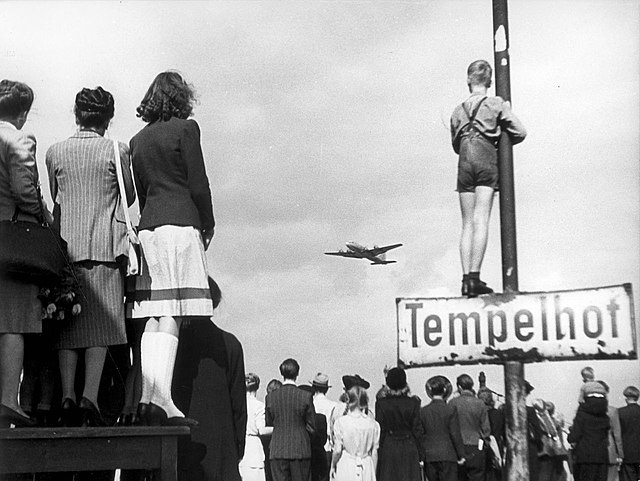Emigration from the Eastern Bloc
After World War II, emigration restrictions were imposed by countries in the Eastern Bloc, which consisted of the Soviet Union and its satellite states in Central and Eastern Europe. Legal emigration was in most cases only possible in order to reunite families or to allow members of minority ethnic groups to return to their homelands.
Konrad Schumann leaping over barbed wire into West Berlin on August 15, 1961, three days after construction began on the Berlin Wall
Rare Soviet "type 2" visa for permanent emigration
A line for the distribution of cooking oil in Bucharest, Romania in May 1986
Sudeten Germans expelled after World War II
The Eastern Bloc, also known as the Communist Bloc (Combloc), the Socialist Bloc, and the Soviet Bloc, was the coalition of communist states of Central and Eastern Europe, Asia, Africa, and Latin America that were aligned with the Soviet Union and existed during the Cold War (1947–1991). These states followed the ideology of Marxism–Leninism, in opposition to the capitalist Western Bloc. The Eastern Bloc was often called the "Second World", whereas the term "First World" referred to the Western Bloc and "Third World" referred to the non-aligned countries that were mainly in Africa, Asia, and Latin America but notably also included former pre-1948 Soviet ally Yugoslavia, which was located in Europe.
1950 Soviet stamp, depicting the flags and peoples of communist states at the time, including those of Eastern Europe
The Big Three (British Prime Minister Winston Churchill, U.S. President Franklin D. Roosevelt and Premier of the Soviet Union Joseph Stalin) at the Yalta Conference, February 1945
Stanisław Mikołajczyk, Polish Prime Minister during World War II, fled Poland in 1947 after facing arrest and persecution.
German civilians watching Western supply planes at Berlin Tempelhof Airport during the Berlin Airlift








